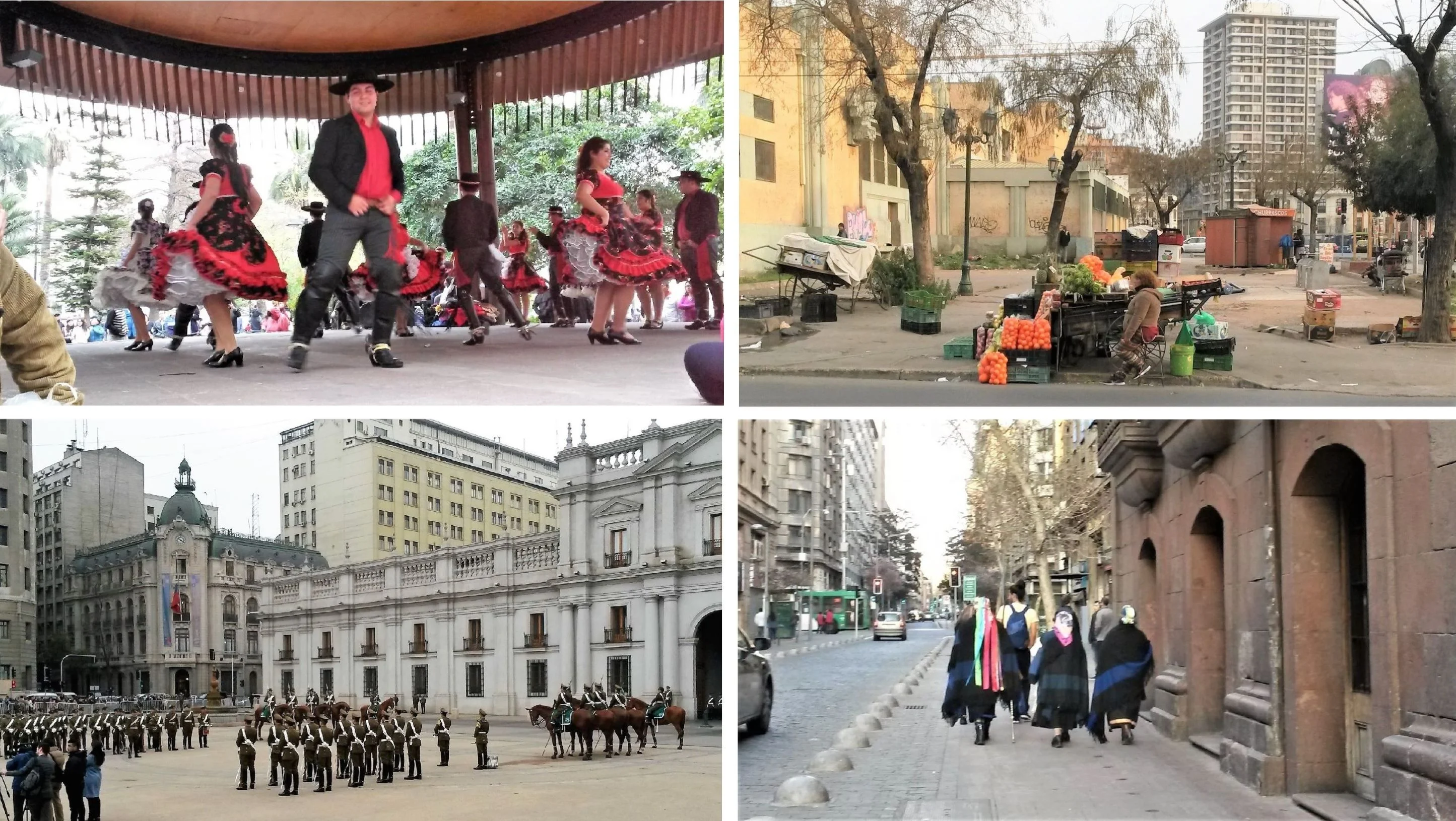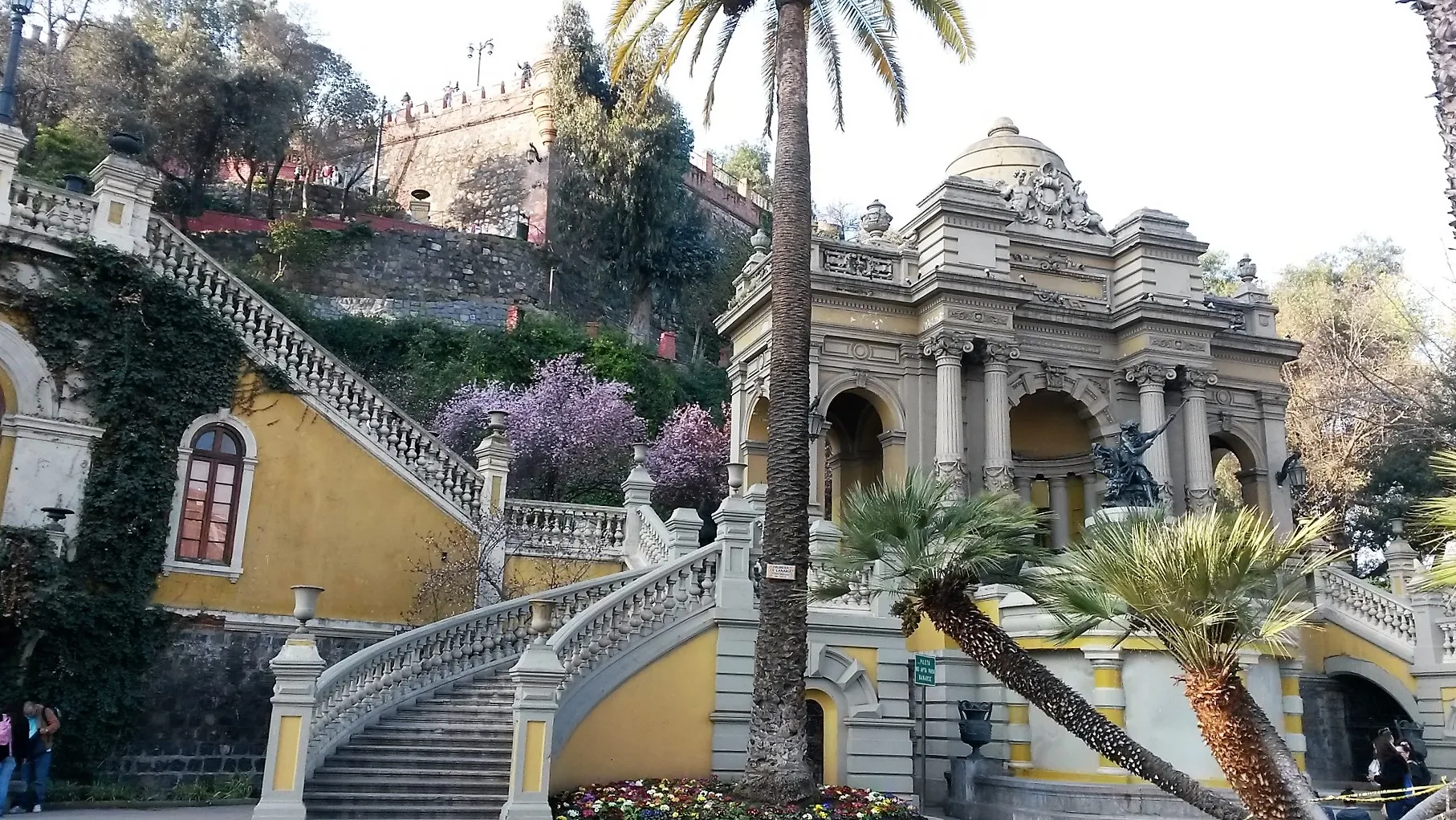Finally, the day had arrived when we were off to South America. We flew from our home airport in Wellington, New Zealand (NZ) to Auckland NZ, then on to Santiago, the capital of Chile. It would be the starting point for our travel up the north-western side of South America over the next few months, and we were really looking forward to it.
But first, we wanted to see Santiago. So, after arriving, we went straight to our central city AirBnB apartment to unpack. We were on the on the 27th floor, with great views over Santiago city, and the misty Andes Mountains. Our first impressions of Santiago, were that it is a busy and rather tired city, with lots of grey buildings. However, we changed our thinking over the next few days as we got out and explored, finding it to be sophisticated and vibrant.
We particularly enjoyed the architecture, and standouts for us were the Museum of Santiago (Casa Colorada), Supreme Court (Palacio de los Tribunales de Justicia), National Library (Biblioteca Nacional de Chile), and Firefighters Corps (Cuartel General del Cuerpo de Bomberos de Santiago).
Others included the Municipal Theatre (Teatro Municipal), Basilica de La Merced, Metropolitan Cathedral, and the National Museum of Fine Arts (Museo Nacional de Bellas Artes). That's quite an eye-full of attractive buildings.
We also really liked Santa Lucia Hill, the remains of a 15-million-year-old volcano that became the place where Santiago was founded in 1541. It's now a beautiful area of terraced gardens and historic memorials. Later we found ourselves in the very interesting Barrio Lastarria quarter, where we had a good look around and a fabulous lunch.
 |
| Top: Plaza de Armas cultural concert; Street stall. Bottom: Changing of the Guard; Indigenous Mapuche women |
In the Plaza de Armas, the central square of Santiago, we saw a cultural concert, and later, we just managed to get to the La Moneda Palace (Presidential Palace), in time to watch the Changing of the Guards. We found lots of pedestrian-only streets, many trees and parks, stalls selling all kinds of stuff, and people everywhere. It is a very walkable and clean city, with an excellent bus and metro system.
After a few days of sightseeing in Santiago city, we caught a bus to Valparaiso, a UNESCO World Heritage city about 1.5 hours west of Santiago, on the Pacific coast.
 |
| Historic ascensore in Valparaíso (UNESCO), Chile |
Valparaiso is Chile's oldest port. The city is set on steep hills around the port, and is known for its historic but tiny (6 person standing) ascensores - a sort of cable railway. They are used to transport people between the commercial areas around the port, and the residential areas in the hills.
The streets lead out and up from the port via twisting, cobbled, and steep thoroughfares that are a challenge to walk, so the ascensores are well used.
 |
| Graffiti art in Valparaíso (UNESCO), Chile |
The town around the port area is old and looks a bit tired, with lots of ugly graffiti and rubbish. However, there is also a huge amount of interesting and colourful street graffiti painted by local artists, that certainly liven up the neighbourhoods.
Then when you get up into one the hills, the town takes on a different aspect. We took a rickety ascensores up Cerro Concepcion (Conception Hill) and found some beautifully restored houses. One in particular dated back to the 1870's and was a restaurant, which we visited.
We could not pass up the opportunity for a meal sitting in such a great location overlooking the water. So we spent some time sampling some of Chile's excellent food and wine, before wandering around a bit more.
The streets are very steep, but offer fantastic views over the Pacific. It was so picturesque.
 |
| Interesting and colourful houses in Valparaíso (UNESCO), Chile |
We walked back down Cerro Concepcion and found many colourfully painted houses lining the steep streets, adding more charm to the city. Overall, we had a really interesting day. We enjoyed Santiago and Valparaíso, and both felt very safe; even at night.
When we were heading back to Santiago, we found ourselves slightly short of pesos for our transport, and a lovely man topped it up for us - such a generous person. However, it did test our rudimentary Spanish. Thank goodness for Google translate!
 |
| Valparaíso street near bus stop |
Eventually it was time to move on from Santiago, so we packed up and caught a local bus to the airport. Chile is known as the longest and narrowest country in the world, being sandwiched between the Andes Mountains and the Pacific Ocean. Near its northern point is the Atacama Desert, and we were about to fly there.
This is part of a blog series about our travels through the north-eastern countries of South America. This blog is the first in the series.



